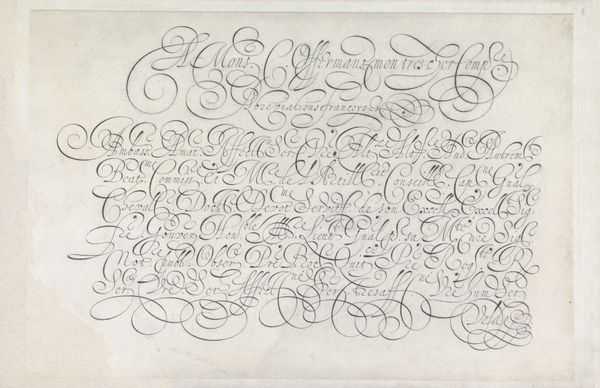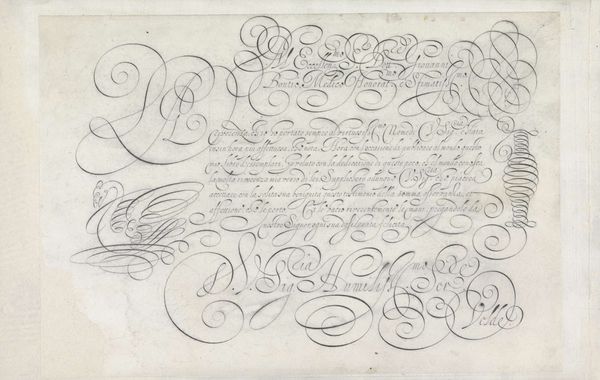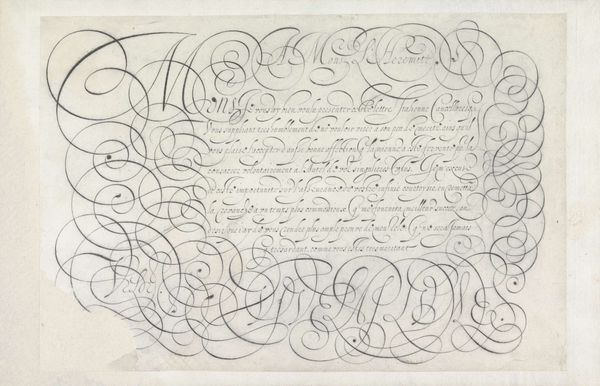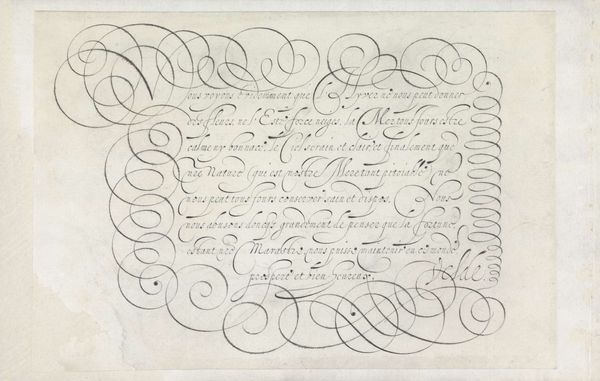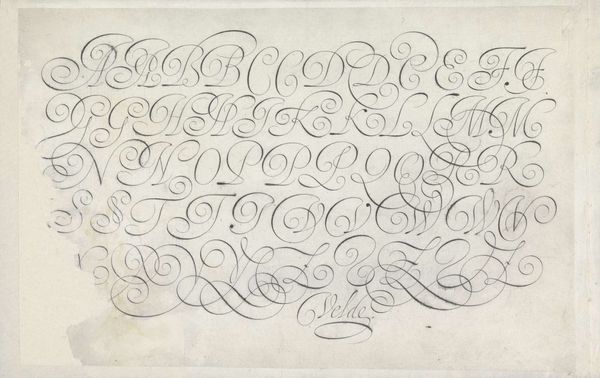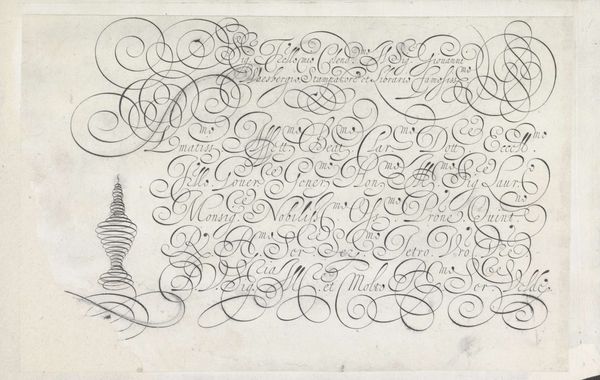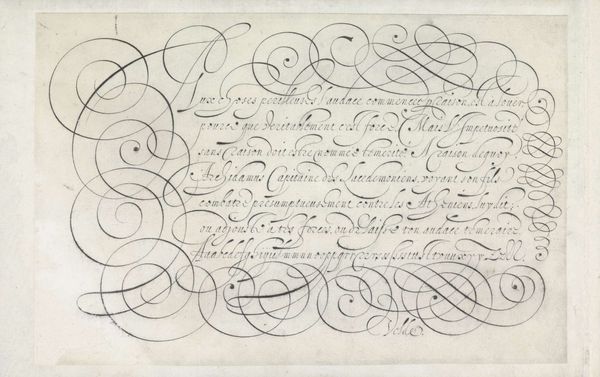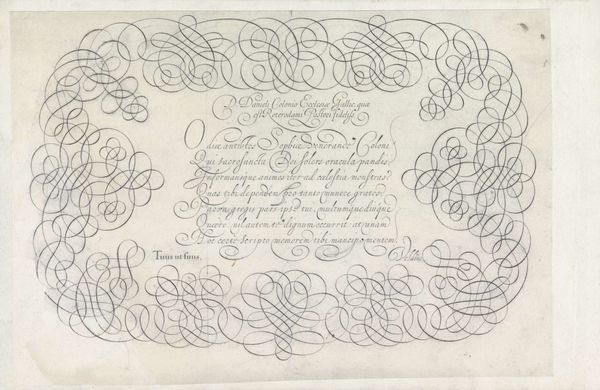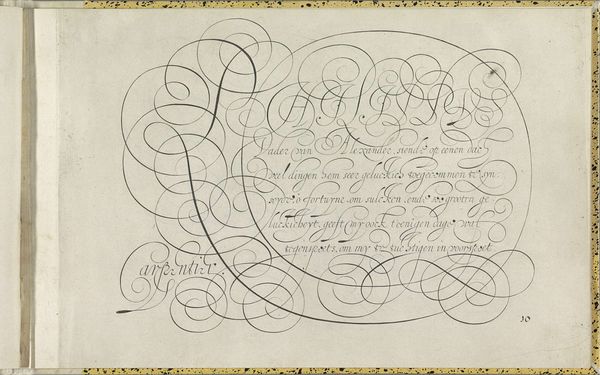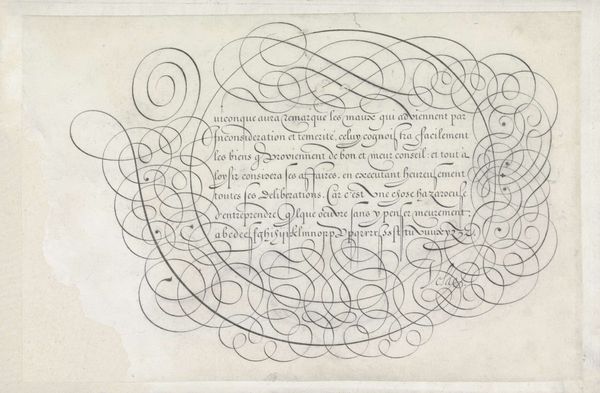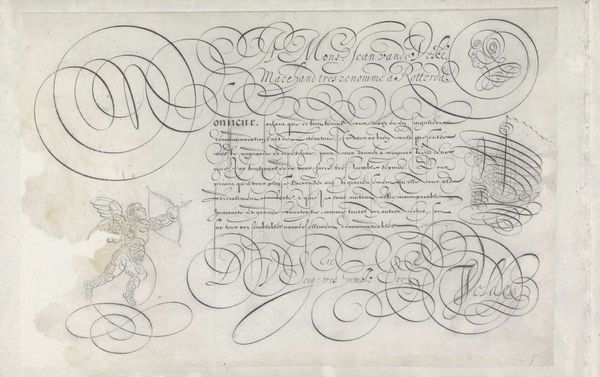
Ontwerp van een schrijfvoorbeeld: Al mag. sig. Henrico den Haen (...) 1605
0:00
0:00
janvandeveldei
Rijksmuseum
drawing, paper, ink, engraving
#
drawing
#
paper
#
ink
#
calligraphic
#
engraving
#
calligraphy
Dimensions: height 200 mm, width 296 mm
Copyright: Rijks Museum: Open Domain
Curator: This stunning calligraphic work, “Ontwerp van een schrijfvoorbeeld: Al mag. sig. Henrico den Haen (...)", dates back to 1605 and comes from the hand of Jan van de Velde I. It combines drawing and engraving techniques, using ink on paper. The piece is currently housed at the Rijksmuseum. Editor: It feels so meticulously constructed. I’m struck by how the stark contrast of the black ink on paper commands attention. Curator: The medium really underscores the importance of penmanship at the time. Calligraphy wasn’t just a craft, it was a form of art, a skill highly valued within the social structure. How one wrote directly reflected on their status. Editor: Absolutely. It reminds me of how guild systems shaped artistic production; penmanship would’ve been strictly governed and controlled. Were these types of skills typically passed down generationally in certain communities? Curator: Yes, these artisanal crafts frequently operated through family or guild apprenticeships, reinforcing both their economic value and cultural preservation. Editor: Seeing the density of these swirling, florid lines, it's amazing that a practical purpose exists – communication. Today, that sort of artistic value has really shifted, when accessibility of typefaces is so simple. How do you see an example of script influencing the perception of societal dynamics at that time? Curator: During this era, the intricate labor of calligraphy reinforced social hierarchies through skill. Now with mass production we see the shift towards availability democratizing language, and altering ideas around authorship. The status once attributed to mastering calligraphy changed over time, transitioning to the realm of graphic design where new forms of skill emerge and are valued within capitalist economies. Editor: That’s fascinating to consider how those perceptions shifted. It shows just how much material processes dictate meaning. This piece acts almost as a snapshot of when writing was on the cusp of huge social and technological changes. Curator: Agreed, by looking at the tools and training involved in its production, and also at the history it offers context for larger shifts within labor markets and cultural values around access, production, and meaning. Editor: Looking closer I find the level of detail incredibly captivating and it's left me wondering how perceptions around accessibility have morphed through time.
Comments
No comments
Be the first to comment and join the conversation on the ultimate creative platform.
